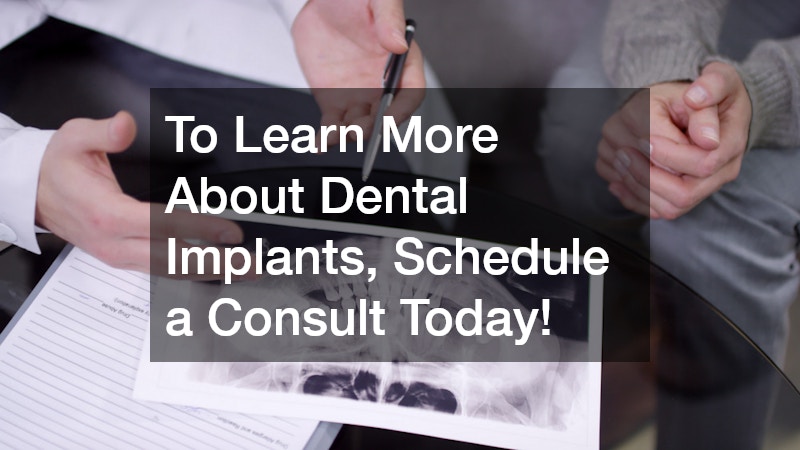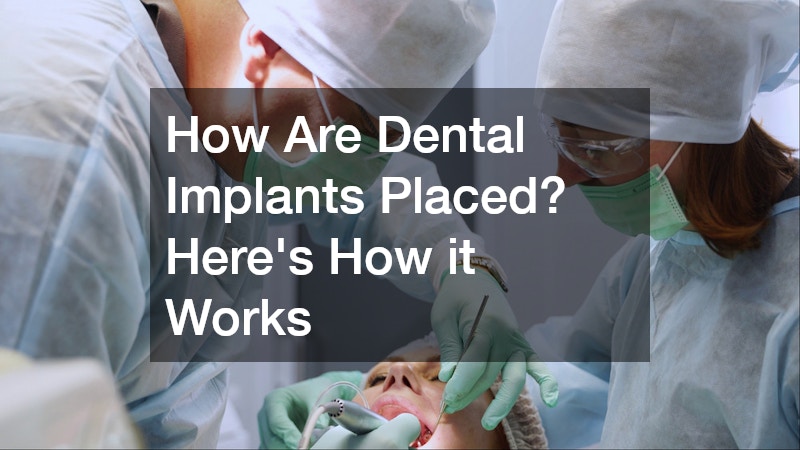
Dental implants have revolutionized restorative dentistry, offering a durable and natural-looking solution for missing teeth. Unlike traditional dentures or bridges, dental implants integrate directly with the jawbone, providing stability and preventing bone loss over time. This procedure is ideal for individuals seeking long-term tooth replacement that mimics the feel and function of natural teeth.
The process of placing dental implants involves multiple steps, from initial planning to final restoration, ensuring optimal results tailored to each patient’s needs. Understanding how dental implants are placed can demystify the experience and help you make informed decisions about your oral health.
What are the Steps Involved in Dental Implant Surgery?
The journey to receiving dental implants begins with thorough preparation and ends with a fully functional prosthetic tooth. This surgical process is typically performed by oral surgeons or periodontists who specialize in dental implants, ensuring precision and safety.
Initial Consultation and Assessment
The first crucial step in dental implant placement is the initial consultation and assessment. During this visit, your dentist will conduct a comprehensive evaluation of your oral health, including X-rays, CT scans, or 3D imaging to assess bone density, gum health, and the positioning of adjacent teeth. This assessment is vital because dental implants require sufficient jawbone support to succeed. If bone loss has occurred due to missing teeth or other factors, additional procedures like bone grafting may be recommended. Planning at this stage involves discussing your medical history, any medications you’re taking, and your expectations for dental implants. This personalized approach helps identify potential challenges early, ensuring the procedure is safe and effective.
Surgical Placement of the Implant
Once the assessment is complete, the surgical placement of the dental implant follows. This outpatient procedure is usually done under local anesthesia, with sedation options available for anxious patients. The surgeon makes a small incision in the gum to expose the jawbone, then drills a precise hole where the titanium implant post—acting as an artificial tooth root—will be inserted. The post is carefully screwed into the bone, and the gum is sutured closed over it. In some cases, a temporary abutment or cover screw is placed to protect the site. This phase of dental implant surgery is minimally invasive, often taking less than an hour per implant, and patients typically experience only mild discomfort afterward.
Osseointegration and Healing Time
After the surgical placement, the magic of osseointegration begins. This is the biological process where the jawbone fuses with the titanium surface of the dental implant, creating a strong foundation. Osseointegration is essential for the stability and longevity of dental implants, as it allows them to withstand the forces of chewing. The healing time for this integration varies but generally spans several months. During this period, patients are advised to follow a soft diet and maintain excellent oral hygiene to support healing. Regular follow-up appointments monitor progress, and once osseointegration is confirmed via imaging, the next step involves attaching an abutment—a connector piece—and finally, the custom-made crown, bridge, or denture to complete the dental implant restoration.
How Long Does the Dental Implant Process Take?
The timeline for dental implants can seem lengthy, but it’s designed to ensure lasting success. Factors like individual health and the complexity of the case influence the duration, but understanding the phases helps set realistic expectations.
Duration of Each Phase
Each phase of the dental implant process has its own timeframe. The initial consultation and assessment might take one to two visits over a week or two. Surgical placement is quick, often completed in a single appointment lasting 1-2 hours. Osseointegration, however, requires patience, typically lasting 3-6 months for the lower jaw and up to 6-9 months for the upper jaw due to differences in bone density. After healing, attaching the abutment and crown adds another 2-4 weeks, including time for impressions and fabrication of the prosthetic.
Factors Affecting Healing Time
Several factors can affect the healing time for dental implants. Smoking, for instance, impairs blood flow and can delay osseointegration, increasing failure risks. Conditions like diabetes or osteoporosis may slow bone healing, requiring extended monitoring. The quality and quantity of jawbone also play a role; patients needing bone grafts might add 3-6 months to the process. Age, overall health, and adherence to post-operative instructions further influence recovery. Dentists often recommend lifestyle adjustments, such as quitting smoking or managing chronic conditions, to optimize healing for dental implants.
Typical Timeline from Start to Finish
From start to finish, the entire dental implant process usually spans 4-9 months, though complex cases can extend to a year. A straightforward single-tooth implant might wrap up in 4-6 months: consultation in week 1, surgery in week 2, osseointegration over months 1-4, and final restoration by month 5. For full-mouth dental implants or those involving multiple teeth, the timeline could stretch longer due to staged procedures. This comprehensive approach ensures dental implants provide a permanent solution, often lasting 15-20 years or more with proper care.
Are There Risks or Complications with Dental Implants?
While dental implants boast a success rate of over 95%, like any surgical procedure, they carry potential risks. Awareness and proactive management can minimize these issues.
Common Risks and Side Effects
Common risks associated with dental implants include infection at the implant site, which can manifest as swelling, pain, or pus. Nerve damage, though rare, might cause numbness in the lips, gums, or chin. Sinus problems can occur with upper jaw dental implants if the implant protrudes into the sinus cavities. Other side effects include bleeding, bruising, or implant failure due to poor osseointegration. Peri-implantitis, an inflammatory condition similar to gum disease, can develop if oral hygiene is neglected, potentially leading to bone loss around the dental implant.
Preventive Measures and Aftercare
Preventive measures and diligent aftercare are key to successful dental implants. Immediately post-surgery, apply ice packs to reduce swelling and take prescribed antibiotics or pain relievers as directed. Maintain oral hygiene by gently brushing and using antimicrobial rinses, avoiding the surgical site initially. Long-term, regular dental check-ups, flossing around dental implants, and quitting tobacco use are essential. A balanced diet rich in vitamins supports bone health, while protective measures like night guards prevent grinding that could stress implants.
When to Consult Your Dentist
It’s crucial to consult your dentist promptly if issues arise after dental implant placement. Contact them if you experience persistent pain, swelling beyond a few days, fever, or unusual bleeding. Loose implants, changes in bite alignment, or signs of infection warrant immediate attention. Routine follow-ups are scheduled, but don’t hesitate to seek advice for any concerns—early intervention can prevent minor issues from escalating and ensure the longevity of your dental implants.
In summary, dental implants offer a reliable path to restoring missing teeth through a structured process involving consultation, surgical placement, osseointegration, and final restoration. The timeline, typically 4-9 months, accounts for healing influenced by personal health factors, while risks like infection can be mitigated with proper aftercare. Ultimately, the benefits of dental implants—improved function, aesthetics, and confidence—far outweigh the investment. However, success hinges on professional expertise, so always consult a qualified dental professional to determine if dental implants are right for you and to guide you through the procedure safely.




